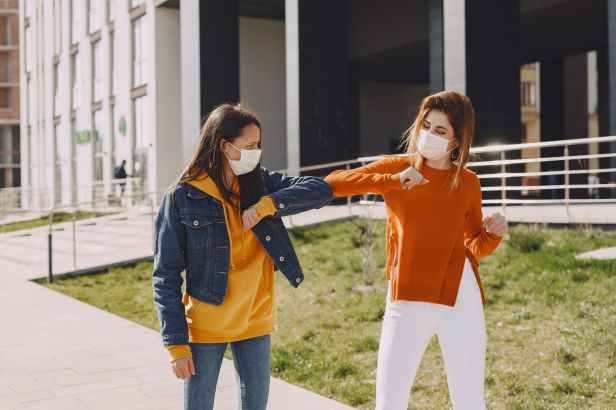What to do before your college student comes home.

Your college student returning home for Thanksgiving Break should create a feeling of pure joy for your family. This year, because of COVID-19, along with the excitement of seeing your child, you probably have concerns about how to keep everyone safe—those in your household, as well as your student. I interviewed Dr. Bill Miller, an infectious diseases epidemiologist and Senior Associate Dean for Research at The Ohio State University College of Public Health to learn about rational precautions, sensible guidelines and how to enjoy your holiday together. In this Q & A post, the first of two, we discuss the protocols your college student and family should take before your child arrives home.
What considerations should families take into account when a student is returning home from college during the pandemic?
The basic concern is that a student coming home will break any bubble that a home might have had for the past few months. How big a risk that is depends on several things. Are there vulnerable people living at home—older folks, and/or people with diabetes, asthma, other conditions or weakened immune systems? How careful has the student been? How many people do they live with? Does the college have a testing program? Have lots of kids been infected or not very many?
Should the student take an exit test before returning home? If so, when? What happens if the result is positive?
Yes, an exit test, or two, is a great idea. An exit test is a COVID-19 test performed near the time that the student leaves for home. When thinking about exit tests or COVID-19 tests in general, it’s important to remember that tests may be falsely negative early in the course of infection. In other words, someone may have negative COVID-19 tests for 5-6 days after they were exposed. For college students, the ideal, which may not be feasible for many students, would be to test about 5-7 days before they leave for home and then again just before they go home, in time to get the results. Between the tests, the student should do their best to self-quarantine, limiting contact with others, and wear a mask consistently. If they can’t test twice, then it’s good to test as close to the time they plan to leave as possible and still get the results. After testing, it’s important to self-quarantine and wear a mask with any contact with people.
If the result is positive, the student will have to enter isolation, either at the college, which is preferred, or at home. Isolation will last about 10 days, depending upon symptoms. If a student goes home knowing that they are positive, they will need to be isolated at home. That means having their own room and bathroom, if possible, and eating alone in that room. Even if the student doesn’t have any symptoms, they must stay away from others for the full 10 days.
Should everyone in the household get tested before the college student comes home?
Generally, I don’t advocate for everyone in the family to get tested. That is based on the observation that many college campuses have pretty high rates of infection and going home is usually a lower risk. But as cases are rising across the country, it is possible moving home could mean going to a higher risk environment. In that case, a family could consider testing or they could simply plan to practice physical distancing and, ideally, wearing masks at home for the first 10-14 days after a student comes home.
The one time that I’d encourage a family to use testing widely is if the student is vulnerable due to an underlying medical condition.
Should parents drive and pick up their student from campus? Are other transportation options safe? Should students risk carpooling with other students?
How to get home from school is a tricky question. Generally, cars are safer than other modes of transportation simply because people are exposed to fewer people in a car. Keep the windows cracked to improve the ventilation. If a family member is coming to pick up the student, it’s better to keep it to one person, if possible.
Airplanes have good ventilation systems but the risk will increase the longer and more crowded the flight. Buses should be avoided. Trains are in between but it’s important to try to find a car with few people in it.
Carpooling with other students really depends on the testing plan and the exposure of the students previously. If the students have been together, like suitemates, and have been tested, a carpool is fine.
Read my next post that includes more of my interview with Dr. Bill Miller to learn about how to stay safe at home once your college student returns and what to do if they can’t get tested on campus before leaving for Thanksgiving Break.